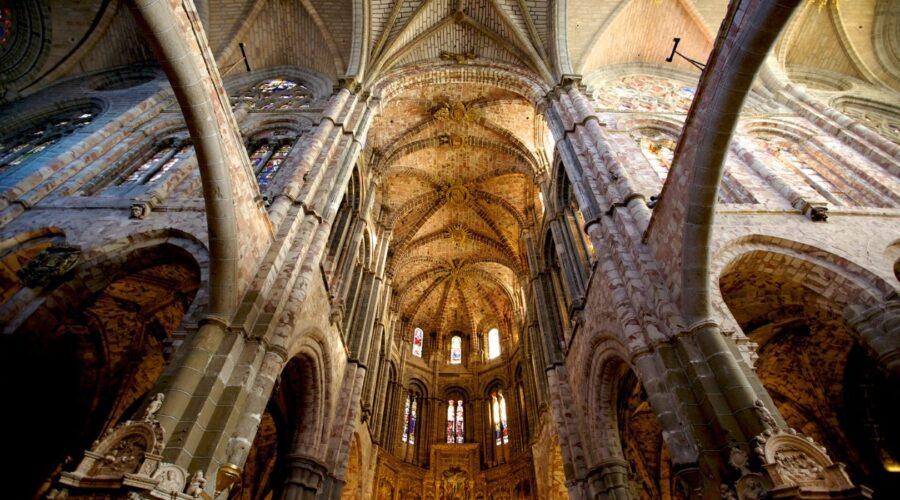Your cart is currently empty!
Unveiling the Significance of Holy Thursday Mass: A Comprehensive Guide

Introduction
Holy Thursday is a pivotal day in the Christian liturgical calendar, commemorating the Last Supper of Jesus Christ with his disciples. The Holy Thursday Mass holds immense religious significance and is observed with profound reverence by countless believers worldwide. This comprehensive guide delves into the multifaceted aspects of Holy Thursday Mass, exploring its history, traditions, symbolism, and spiritual implications.
Historical Significance
The Last Supper
Holy Thursday Mass traces its origins back to the Last Supper, a historical event mentioned in the Gospels. On the eve of his crucifixion, Jesus gathered his disciples for a final meal in Jerusalem. During this meal, he instituted the Eucharist, a symbolic representation of his body and blood, instructing his followers to partake in it as a remembrance of his sacrifice.
Early Christian Celebrations
The earliest recorded Holy Thursday celebrations date back to the 2nd century AD. These gatherings primarily focused on commemorating the Last Supper and reaffirming the importance of the Eucharist. Over time, the celebration evolved, incorporating prayers, readings, and hymns into its liturgical structure.
Liturgical Traditions
Washing of the Feet
A unique tradition associated with Holy Thursday Mass is the washing of the feet. This practice symbolizes humility and service, reminiscent of Jesus’s act of washing his disciples’ feet during the Last Supper. In some churches, the priest or bishop washes the feet of twelve individuals, representing the twelve apostles.
Stripping of the Altar
After the washing of the feet, the altar is stripped of all its decorations, signifying the darkness and desolation that enveloped the world after Jesus’s arrest and crucifixion. The bare altar serves as a reminder of the sacrifice and suffering that was to come.
Holy Communion
Holy Communion, or the Eucharist, is the central sacrament of Holy Thursday Mass. Believers receive bread and wine, symbolizing the body and blood of Jesus Christ. This act of communion strengthens their faith, unites them with Christ, and fosters a deep sense of community.
Symbolism and Spirituality
The Paschal Mystery
Holy Thursday Mass forms an integral part of the Paschal Mystery, the central theme of Christian faith. The Paschal Mystery encompasses the suffering, death, and resurrection of Jesus Christ. Holy Thursday represents the commencement of this sacred journey, leading to the celebration of Christ’s victory over death on Easter Sunday.
Repentance and Renewal
Holy Thursday Mass provides an opportunity for reflection, repentance, and renewal. It is a time for believers to examine their lives, seek forgiveness for their sins, and recommit to their faith. Through the act of Holy Communion, they experience a profound sense of reconciliation and spiritual growth.
Agape Meal
In many churches, an Agape Meal, or a meal of love, is shared after the Holy Thursday Mass. This meal, typically consisting of simple food, symbolizes the unity and fellowship fostered among believers. It also serves as a reminder of the Last Supper and the commandment to love one another.
Tips and Considerations
Attendance
It is highly recommended to attend Holy Thursday Mass in person if possible. The live experience enhances the spiritual significance of the celebration and fosters a sense of community with fellow believers.
Preparation
To fully appreciate the significance of Holy Thursday Mass, it is beneficial to prepare beforehand. Reading relevant scriptures, praying, and engaging in reflective meditation can deepen one’s understanding and connection to the event.
Dress Code
While dress codes may vary depending on the church, it is generally advisable to dress respectfully and modestly for Holy Thursday Mass.
Reverence and Respect
Throughout the Mass, it is essential to maintain an attitude of reverence and respect. This includes being mindful of noise levels, refraining from distractions, and actively participating in the prayers and rituals.
Conclusion
Holy Thursday Mass is a sacred and meaningful event that commemorates the Last Supper and initiates the Paschal Mystery. Its historical significance, liturgical traditions, symbolism, and spiritual implications provide a profound opportunity for believers to deepen their faith, seek renewal, and experience a tangible connection with the sacrifice and love of Jesus Christ. By engaging in Holy Thursday Mass with a heart filled with reverence and devotion, individuals can participate in a transformative spiritual journey that nourishes their souls and strengthens their relationship with the divine.